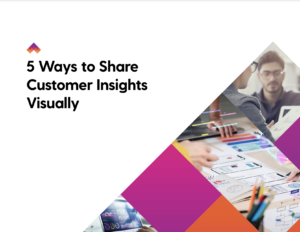Traditional market research strategies definitely have their place when it comes to identifying different aspects that lead to consumer purchasing decisions. However, in recent years with the advancement of data science and as information technology has boomed, the capabilities for market research have increased significantly. Big data now makes it possible to extract predictive information about consumers from large databases.
This relatively new market research approach is called data mining, and it plays a vital role in market research.
What is Data Mining and How Does it Work?
Data mining is different from traditional market research in a couple of different ways. It market research software with built-in machine learning and algorithms to glean insights from databases or other large stores of information. While traditional research provides new insights, data mining gleans insights from data that by nature already exists.
For example, a credit card company could use data mining to generate a list of products a customer is more likely to purchase based on their credit card purchase history. Additionally, an e-commerce company could analyze all past purchases. Then, they could use these analytics to target ads and make more relevant product recommendations based on the data.
Data mining can also provide real-time recommendations. For example, if a customer ads a specific item to their cart, an algorithm could make additional product recommendations based on what other customers purchased in addition to that product.
What is the Value of Data Mining?
Data mining for market research is the perfect way to get a more comprehensive view of your customers. With data, you can learn more about consumers preferences, get a peek into purchasing histories, gather demographic, gender, location, other profile data, and much more.
With that mining research, you can then provide more personalized consumer experiences, up your marketing strategies, maintain a robust analysis process, and pitch products that consumers are more likely to respond well to.
For example, email marketers use data mining to provide more personalized content to subscribers. With the help of a CRM or another big data collection tool, they can learn things like gender, location, weather patterns, and more. Then, email marketers can use that information to segment lists and provide more relevant content.
Adidas does this by collecting gender information on customers. Then, they segment their email lists and data sets to send their new men’s apparel collection to males and their new women’s apparel collection to females.
This is a simple example, but it gives you a glimpse into how you can improve the customer journey and make your job easier through producing increased relevancy and personalized experiences.
How Does Your Business Utilize Data Mining in Market Research?
Data mining has already impacted the United States commerce, market research and marketing industries greatly. It provides brands with the opportunity to get to know their customers better and creates a science-backed, reliable process. It will be fun to see more information technology and academic advances in the future.
Data mining is only one step in learning how you can improve your business and marketing efforts. Fuel Cycle can help you harness the power of data and your most loyal customers to help deliver powerful insights into current marketing strategies, and give you an agile platform to develop marketing strategies in the future. Contact Fuel Cycle’s team of experts to learn more.








